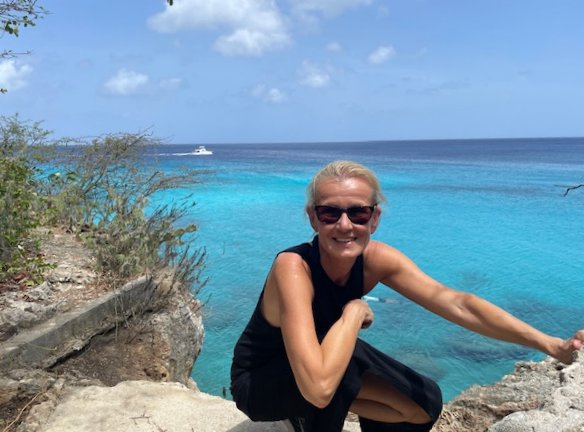Prof. em. Dipl.-Fashion Designer Karin Martens, born as Karin Stark in Thuringia in 1961. I graduated from the Berlin Weissensee Universitiy of Art with a degree in fashion design.
I held permanent positions as a designer in German companies and abroad, including in Paris, and worked primarily in women’s fashion and textile design.
From 1996 to 2024, I held a professorship in „Design Basics including Collection Design“ at the Niederrhein University of Applied Sciences in the Department of Textile and Clothing Technology in Moenchengladbach.

Exhibitions:
„Anmut“ (engl. „Grace“), a joint exhibition in Niederkruechten Elmpt featuring nude drawings.
„BIS auf die Haut“ (engl. „Down to the Skin“), a joint exhibition at BIS (center for open cultural work) in Moenchengladbach featuring nude studies.
„Zwischen Schein und Sein“ (engl. „Between Appearance and Reality“), East German Fashion Drawings 1960 – 1990, Reinbeckhallen, Berlin.
Drawing, especially nude drawing, as well as studies in clothing representation and fashion illustration, are naturally part of a fashion designer’s profession. However, drawing means more to me than that. It is the search for lines, surfaces, and shapes that condense on paper and become illustrations.
In addition to traditional graphite nature studies, I often use the frottage/nitrofrottage technique to create variations in my drawings. This technique involves rubbing a drawing with a solvent to create a mirror-image copy. However, the results are largely random because not all of the lines in the original are reproduced exactly. When reworking the frottages, I easily fall into a workflow. I forget the time and become completely absorbed in the creative process. I am surprised by how the further use of mixed techniques with markers and Polycolor pens results in colorful illustrations.
These illustrations are inspired by my travels and extended stays in Curaçao. The island’s beauty fascinated me and inspired me to pick up my sketchbook again, as I did during my student days. In addition to observing nature, I focus on people, especially strong women. Through my work, I play with clichés of Western designer fashion and Caribbean-influenced elements.
